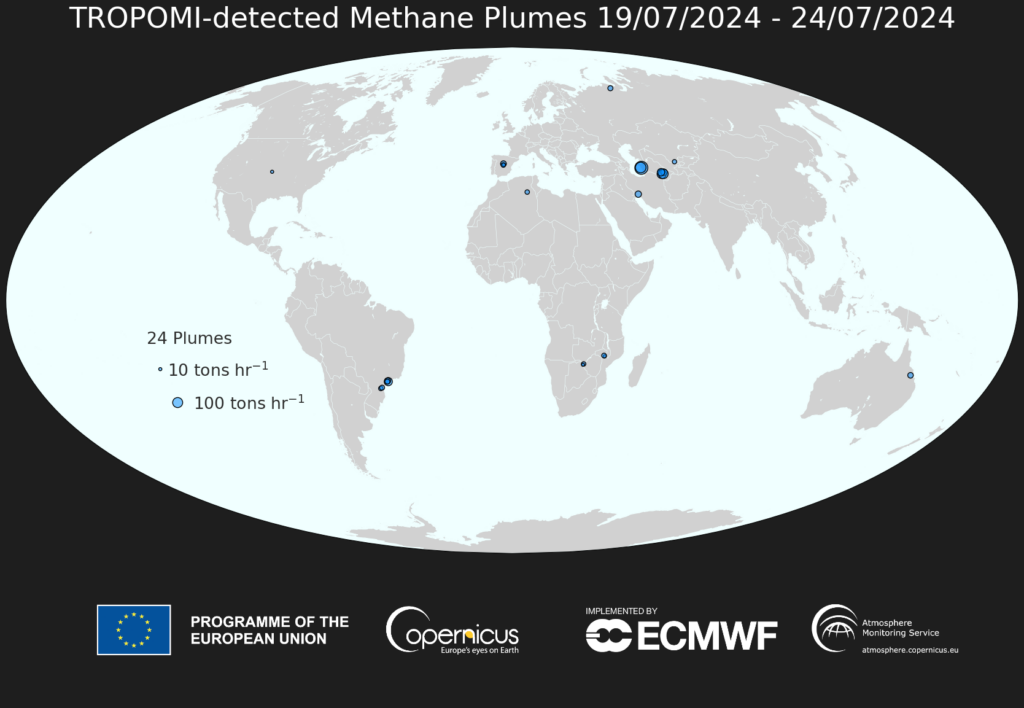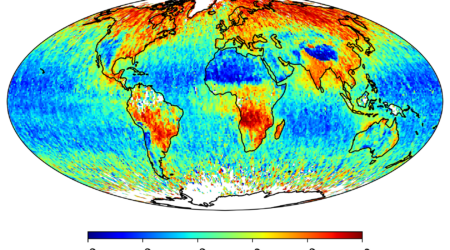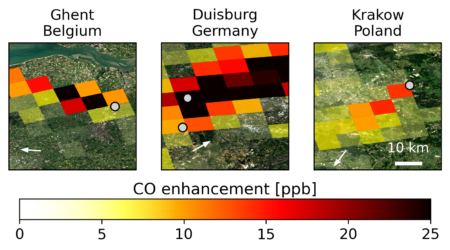SRON to detect methane plumes for the Copernicus Atmosphere Monitoring Service
SRON has been selected by the European Copernicus Atmosphere Monitoring Service (CAMS) to provide satellite data analysis for its new monitoring service on methane emissions. CAMS provides atmospheric information to policymakers, businesses and citizens. It delivers real-time European air quality analyses and forecasts as well as observation-based emission estimates.
‘Methane is an urgent target for climate mitigation as it is responsible for roughly 30% of global warming,’ says project lead Ilse Aben (SRON) ‘Reducing methane emissions is key to reach the goals of the Paris agreement. Additionally, 155 countries have committed to reduce global methane emissions by 30% by 2030 in the Global Methane Pledge. Satellite detection of large methane hotspots can make an essential contribution to these goals.’

Weekly TROPOMI detection of methane super-emitter plumes.
The new monitoring service will center on the detection of large methane plumes using TROPOMI. It builds on a machine learning methodology that SRON published last year, which automatically scans millions of TROPOMI observations per day to identify methane plumes. SRON partners with IUP Universität Bremen and the Max Planck Institute for Meteorology to improve the analysis of TROPOMI data and underlying emissions. The new service fits within the broader CO2 and methane emissions Monitoring and Verification Support (CO2MVS) capacity that CAMS is setting up to monitor emissions around the world. CAMS is implemented by the European Centre for Medium-Range Weather Forecasts with funding from the European Commission.

Duo of Satellites Detect Large Methane Emission from Ethiopian Volcano

Dutch space instrument SPEXone produces world map of aerosols

